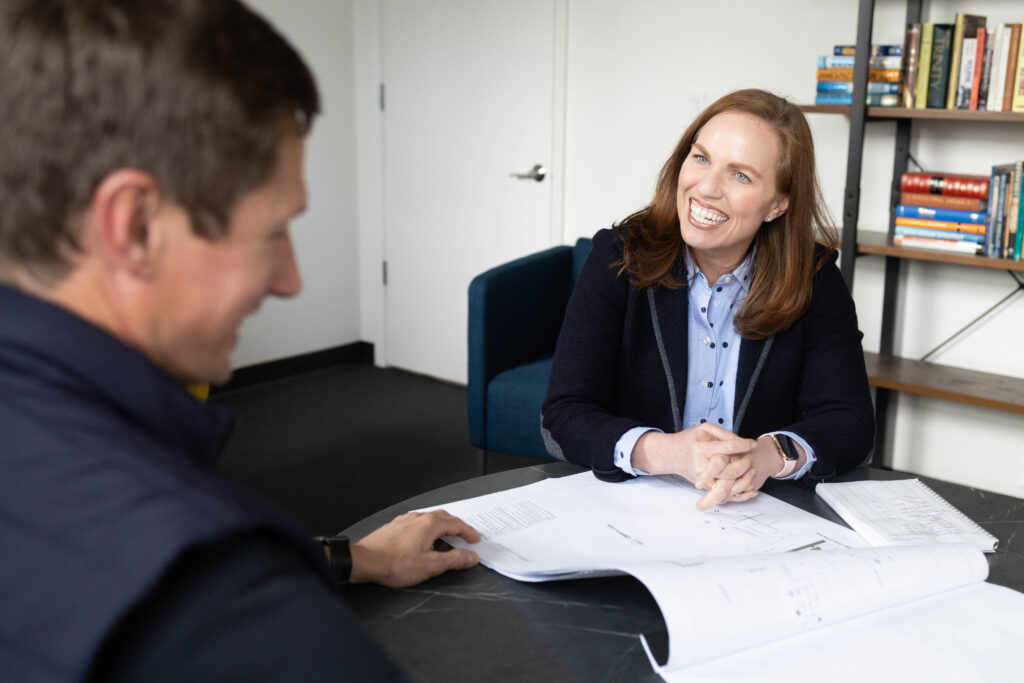
With every new project, we are ready to hit the ground running with the proverbial pencil to paper poised at the ready. “This is going to be a great project!” we think. Universally, this joy is where we all start, but how do we stay that way? How do we keep the “bullseye” in our mind when it’s muddy and cold and we’ve done three budget reconciliation exercises? The Project Team needs to refresh itself on what it is building, and an Owner’s Project Requirement (OPR) provides that clarity.
Buildings are envisioned with the best of intentions – to use more sustainable materials, to build a carbon neutral facility, to have fully integrated building systems. But without a detailed plan to inform the project team and hold decisions accountable, the original building goals can quickly lose priority. “Why are we doing this?” “What does this need to do?” “What problems are we solving?” Asking those questions and more and championing the answers is the work Paladin does when commissioning a project toward the desired outcomes.
What is an Owner’s Project Requirements (OPR)?
The repository of these goals and plans is an Owner’s Project Requirements (OPR) document. The OPR is created to ensure a building hits the bullseye, and is the first step and arguably most important piece of documentation prepared on a project. The OPR sets the expected standards, milestones, and goals of a project. This includes but is not limited to building systems, energy efficiency, sustainability, indoor environmental quality, security, quality of materials, monitoring and ongoing commissioning, and maintenance staff training. All decisions throughout the project will reference this document for guidance – especially in the budget-cutting exercises.
A successful OPR will integrate considerations relayed by an Owner, the design team, maintenance staff, commissioning team, and the building’s end users. It will establish prioritization frameworks for conflicting choices. Because it starts in Pre-design Phase, it will require editing and updating throughout Design, Construction, and Substantial Completion to sharpen the definition of the building and its characteristics.
The OPR Helped Hit The Bullseye On The “Ecofibre Kentucky – Hemp Black” Project
To help illustrate the message, I will draw from a case study completed a few years ago – Ecofibre Kentucky – Hemp Black. My reason for selecting this comes from the evolving conversations about the project.
The project originally self-described as a “40,000 sf warehouse facility with offices and some CBD product manufacturing. It will be sited in an industrial park in Georgetown, KY, for a global hemp company.” That description likely evokes certain mental images: PEMB with rooftop units and an office area with punched windows.
Later, the company’s CEO shared a very different goal: “A LEED Platinum facility that serves as a marketing tool showcasing Ecofibre’s product line, manufacturing processes, and environmental stewardship.” That shift in project descriptions changed the look, feel, and performance of the building. And all this was captured in the corresponding Owner’s Project Requirements document.
This goal and outcome shaped the strategy for every aspect of the project team. The corresponding criteria were documented in a robust OPR maintained by Ecofibre. It recorded measurable criteria like clean room air changes per hour and intangible requirements like marketability and human connection. Completed during the height of the COVID-19 pandemic, the project had many opportunities for OPR deviation. However, the strength of coming back to the criteria allowed the team to stay on course and verify results despite the shifting workforce availability and ensuing supply chain issues
Benefits of Having an OPR to Follow
Our takeaway is that an Owner’s Project Requirements document is a valuable tool. The absence of an OPR leaves the final project vision open to interpretation based on circumstances and preference.
OPR Best Practices
My encouragement to Owners, designers, and commissioning providers (including a reminder for those here at Paladin) is to take the time to document project decisions and assumptions in a shared Owner’s Project Requirements document. If you are in a project in process, a good place to start is through compilation of meeting minutes in one cohesive document. Then, asking the project team to support answering, “How can we measure this goal?”
For new projects, I’ve listed my top ten questions for an Owner’s Project Requirements document as a place for you to begin brainstorming your own. There are also helpful templates and guides available through most commissioning associations.
- What business/educational/etc. goal(s) do you get to achieve when this project is completed?
- How are you (The Owner) being measured as successful on this project?
- What criteria do you know you have to comply with?
- What are some of the things you really want to include in the project?
- What are the strategic goals of your organization that you are working towards right now? How are they being measured?
- What do the users of this building say they want from the project?
- Who is going to operate the building? What do they want to make sure they have to do their job?
- When we must make tradeoff decisions, what framework do you want to use to evaluate options?
- What concerns do you have about the project? (or what risks do you see with the project)
- When I am finished with my scope, what will let you know I’ve done a good job?
Set Your Project on the Right Path With an OPR
My recommendation is to remember that each construction project started as a goal to solve a problem or address a need. Understanding the basics of what we are delivering should begin well before we ever start applying design and figuring costs. Those decisions, documented in the OPR, become a touchstone for guidance, for tradeoff review, for verification, and ultimately for acceptance of the project. As both a defensive and offensive tool, the OPR is a strategically important document which aligns the team and presses us all forward on our unique paths to the ribbon cutting. Find out how Paladin can help bring all of these elements together for you. Contact us today.
More about Ecofibre: Ecofibre is a hemp company revolutionizing the textile industry based on sustainability. Their breakthrough product, Hemp Black, is a carbon negative product which can be added to textiles, materials, and other products to improve performance and decrease the embodied carbon. Here’s how Ecofibre is doing against that goal!
